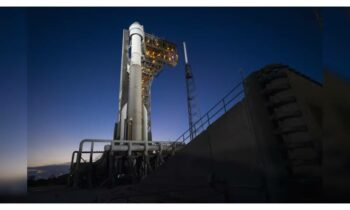After an unsuccessful first attempt, Japan’s space agency reports that it has successfully launched its flagship H3 space rocket.
The Japan Aerospace Exploration Agency (JAXA) released a statement on Saturday announcing that the H3 has departed the Tanegashima Space Center in southern Japan at 9:22 a.m. local time.
The space agency declared that it had verified the rocket had entered orbit in the intended orbit and that the second-stage engine’s combustion was complete.
According to JAXA, the H3, which replaces Japan’s H-2A and H-2B rockets, is intended to be more affordable by utilizing off-the-shelf commercial items rather than proprietary aerospace parts.
In the future, JAXA anticipates that the H3 will be able to launch both government and commercial missions. Should these missions prove successful, the space agency intends to launch the H3 up to six times year for the next twenty years.
Last March, H3’s first launch attempt was unsuccessful when its second stage failed to ignite and, after 15 minutes of liftoff, its operators sent out a destruct command. That was just one of many issues facing the first launch, which was already delayed due to two of the rocket’s secondary booster engines experiencing ignition failures.
With Saturday’s successful launch, JAXA has now achieved two victories in as many months since the robotic explorer known as “moon sniper” touched down on the moon in January.
Despite technical difficulties that rendered the Smart Lander for Investigating Moon, or SLIM, unusable for days after landing, JAXA celebrated that moment as “a significant achievement for future lunar and planetary exploration,”
The spacecraft’s solar cells were unable to produce power since it had landed with its face facing the incorrect way. But after ten days, it awoke.
Additionally, JAXA demonstrated a “pinpoint” landing within 100 meters of the SLIM’s target using new precision technologies.
After India successfully launched its Chandrayaan-3 spacecraft to the moon in August of last year, Japan is now the fifth nation to do so. China, the US, and the erstwhile USSR have all launched spacecraft to the moon.
Countries’ ambition to access water stored as ice in permanently shadowed parts of the lunar south pole is one of the driving forces behind the new space race. According to experts, as mankind pushes the limits of space exploration in the future, this might be used as fuel or as drinking water.



